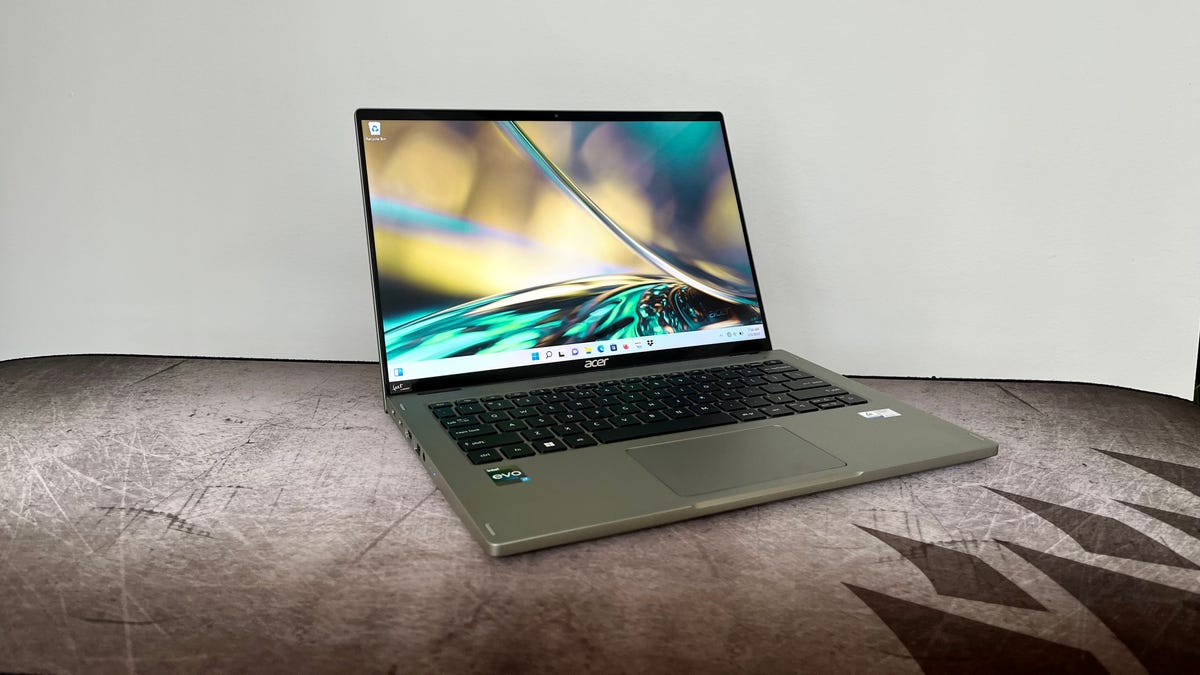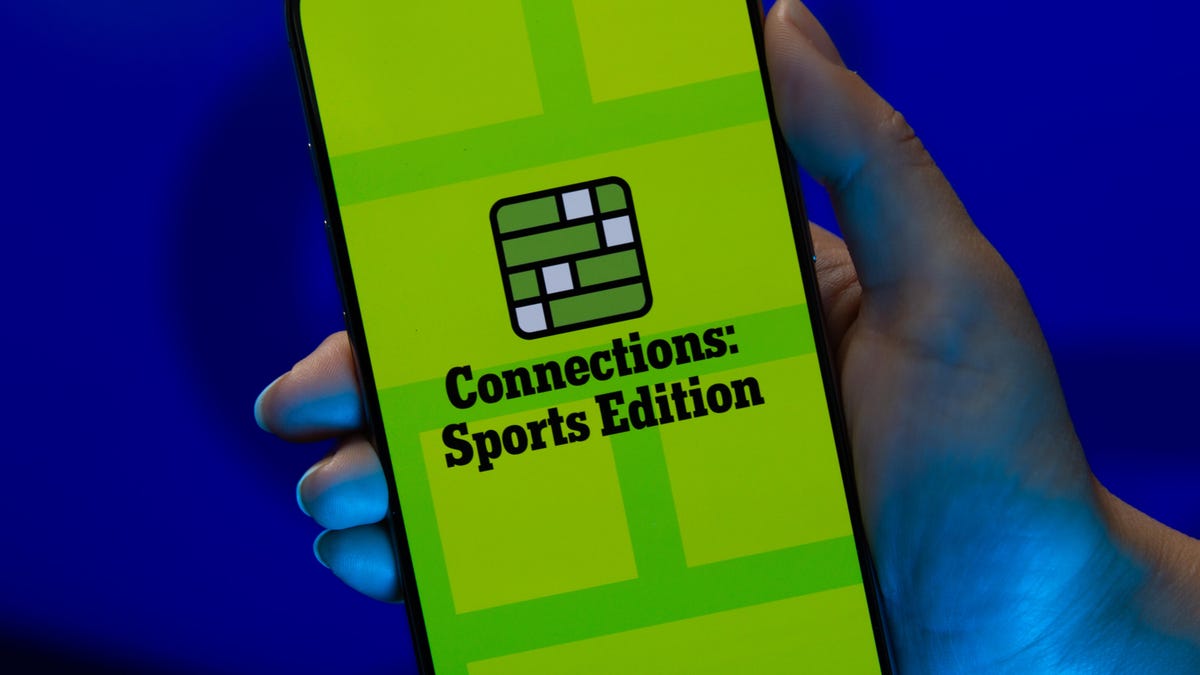Technologies
Acer Spin 5 Review: Solid 2-in-1 With an OLED Omission
Competing models only slightly more expensive boast OLED displays. But if that’s not a must-have for you, the Spin 5 is a reliably good, lightweight convertible.

The Acer Spin 5 is a lightweight, all-aluminum, two-in-one laptop with a high-resolution, 14-inch display powered by speedy 12th-gen Intel silicon.
Its plain looks, however, are closer to that of the midrange Lenovo Yoga 7i than premium laptop-tablet hybrids like the Lenovo Yoga 9i, Samsung Galaxy Book 2 Pro 360 or HP Spectre x360 14. These competing models look sleeker with design flourishes like rounded edges and corners for added comfort and style.
With a price that’s on par with these premium competitors, the Spin 5 begins to lose its appeal. And it has less to do with its staid design and more with a missing feature. While the Spin 5’s 14-inch, 16:10 display is crisp and bright, it’s an ordinary IPS panel rather than an OLED panel that would offer greater contrast and color accuracy.
In 2023, it’s difficult to recommend a $1,350 laptop that lacks an OLED display when OLED models cost only a smidgen more. It’s otherwise a solid commute-friendly two-in-one that even comes with an active pen that stores and charges in the body. You might want to wait for a sale, though.
Like
- Strong overall performance
- 1080p webcam
- Comfortable keyboard
- Active pen included
Don’t Like
- IPS display can’t compete with OLED
- Ordinary appearance
- So-so battery life
Acer sells one configuration of the Spin 5 (model SP514-51N-70LZ). It costs $1,350 at Acer and features a 12th-gen Core i7 CPU, 16GB of RAM, a 1TB SSD and a 14-inch, 16:10 display with a 2,560×1,600-pixel resolution. In the UK, the Acer Spin 5 costs 1,400. It’s not currently available in Australia.
You may also see some previous-generation Spin 5 models based on AMD and 11th-gen Intel processors. They’re easy to spot because they feature a 13.5-inch display with a taller 3:2 aspect ratio.
With its Core i7-1260P CPU, 16GB of RAM and integrated Intel Iris Xe graphics, our Spin 5 review system is at or near the top of our benchmarks among a group of similarly priced two-in-ones, with one not insignificant exception. It and the Samsung Galaxy Book 2 Pro 360 feature a CPU from Intel’s 12th-gen P series, which is more performance-oriented than Intel’s U-series chips found in some of the other models you’ll see in the performance charts. The Spin 5 and Samsung along with the AMD-based HP Envy x360 were the best overall performers. The script flips for the Spin 5, however, with battery life. It lasted 9 hours and 39 minutes on our battery drain test, which was an hour shorter than the next closest system.
Beige and boring but well built
The chief attraction of the Spin 5’s design is its sturdiness. The color of the aluminum is what Acer calls Concrete Gray. It looks as dull as that sounds. And to me, it’s more beige, but the all-metal chassis feels rock solid. There’s no hint of flex when you pick it up by a corner or type thunderously on the keyboard. Even the thin lid protecting the display feels rigid when many thin, aluminum lids flex too much to my liking.
Don’t mistake the Spin 5’s sturdiness for it being clunky or heavy. Weighing only 2.9 pounds, this is an exceedingly portable 14-inch system. The chassis is compact, with thin bezels framing the 16:10 display. Despite the trim chassis, the keyboard feels roomy; the only small-ish keys are the half-height up- and down-arrow keys. The keys offer snappy feedback with shallow travel and allow for speedy and near-silent typing. There’s two-level keyboard backlighting, and the power button doubles as a fingerprint reader that you can use with Windows Hello to log in without needing to bother with entering a password.
The touchpad is a bit undersized but wholly functional with responsive and accurate feedback. You can also navigate Windows via the touch display, which can be tapped and swiped on using your fingertip or the included active stylus. The pen can be garaged in the right edge of the laptop when it’s not needed.
Most 14-inch laptops feature a full-HD resolution, but the Spin 5 bumps it up to a 2.5K resolution(2,560×1,600 pixels) for an incredibly sharp picture. The 16:10 aspect ratio makes a huge difference on a 14-inch panel because, at this size, a widescreen 16:9 panel can feel cramped from top to bottom. It’s less of an issue on larger laptops, but at 14 inches and smaller, a 16:10 panel feels so much roomier vertically. You can see more lines on the screen in long documents and web pages and don’t need to scroll as frequently.
The Spin 5’s screen is rated for 425 nits of brightness, and I measured it even a bit brighter than that at around 450 nits. The display was bright enough to see clearly in my sunny breakfast nook, and I didn’t even need to max out the brightness slider.
OLED > IPS
So, the display is crisp and bright and yet I found it ultimately disappointing because an OLED panel becomes an option right around the Spin 5’s price. For roughly $1,500, you can get an OLED panel on the Lenovo Yoga 9i, HP Spectre x360 14 and Samsung Galaxy Book 2 Pro 360. And once you’ve used an OLED laptop and experienced the incredible contrast with absolute black levels and vibrant color, it’s hard to go back to an IPS panel unless you are shopping under $1,000.
OLED panels trickling down from high-end, high-priced laptops for content creators to midrange models is one of the best laptop trends of the past year. The other? The move from grainy 720p webcams to 1080p cameras. The Spin 5 may have missed out on the OLED trend, but it hopped on the 1080p webcam trend.
You will appear in fine, accurate detail to your video conference mates when seated in front of the Spin 5. The webcam isn’t an IR camera, however, so you can’t use facial recognition with Windows Hello. The camera also lacks a physical privacy cover, and there’s no kill switch on the keyboard to guarantee privacy when the camera isn’t being used.
The Spin 5 offers a useful selection of ports. There are a pair of USB-C ports with Thunderbolt 4 support and a pair of USB Type-A ports so you need to hassle with an adapter for your USB devices. The USB-A ports are split with one on each side of the system, but the USB-C ports are both located on the left side. I wish the USB-C ports were also split across each side because you need to use one of them to charge the laptop, and I would have liked the flexibility to connect the power cord to either side of the laptop depending where the nearest power outlet is located. The Spin 5 also supplies an HDMI port as well as a microSD card slot — a rare inclusion.
As currently configured and priced, the Acer Spin 5 is an awkward proposition. There’s no fatal flaw to this 14-inch two-in-one, but it’s priced right about where OLED models start to become an option. The Spin 5 makes sense if you can find it on sale for closer to $1,000, but a better option is waiting for an OLED two-in-one to go on sale for around what the Spin 5 costs right now.
Technologies
Today’s NYT Connections: Sports Edition Hints and Answers for Nov. 29, #432
Here are hints and the answers for the NYT Connections: Sports Edition puzzle for Nov. 29, No. 432.

Looking for the most recent regular Connections answers? Click here for today’s Connections hints, as well as our daily answers and hints for The New York Times Mini Crossword, Wordle and Strands puzzles.
It’s Rivalry Saturday, so Connections: Sports Edition gives a big game a nod with two caregories. If you’re struggling with today’s puzzle but still want to solve it, read on for hints and the answers.
Connections: Sports Edition is published by The Athletic, the subscription-based sports journalism site owned by The Times. It doesn’t appear in the NYT Games app, but it does in The Athletic’s own app. Or you can play it for free online.
Read more: NYT Connections: Sports Edition Puzzle Comes Out of Beta
Hints for today’s Connections: Sports Edition groups
Here are four hints for the groupings in today’s Connections: Sports Edition puzzle, ranked from the easiest yellow group to the tough (and sometimes bizarre) purple group.
Yellow group hint: Fire it on in there.
Green group hint: Buckeyes.
Blue group hint: Wolverines.
Purple group hint: Not double.
Answers for today’s Connections: Sports Edition groups
Yellow group: Baseball pitching feats.
Green group: Associated with Ohio State.
Blue group: Associated with Michigan.
Purple group: Triple ____.
Read more: Wordle Cheat Sheet: Here Are the Most Popular Letters Used in English Words
What are today’s Connections: Sports Edition answers?
The yellow words in today’s Connections
The theme is baseball pitching feats. The four answers are immaculate inning, no-hitter, perfect game and shutout.
The green words in today’s Connections
The theme is associated with Ohio State. The four answers are dotting the I, gray, scarlet and The Horseshoe.
The blue words in today’s Connections
The theme is associated with Michigan. The four answers are blue, Hail to the Victors, maize and The Big House.
The purple words in today’s Connections
The theme is triple ____. The four answers are A, crown, double and play.
Technologies
Today’s NYT Mini Crossword Answers for Saturday, Nov. 29
Here are the answers for The New York Times Mini Crossword for Nov. 29.

Looking for the most recent Mini Crossword answer? Click here for today’s Mini Crossword hints, as well as our daily answers and hints for The New York Times Wordle, Strands, Connections and Connections: Sports Edition puzzles.
Need some help with today’s Mini Crossword? It’s Saturday, so it’s a long one. Read on for all the answers. And if you could use some hints and guidance for daily solving, check out our Mini Crossword tips.
If you’re looking for today’s Wordle, Connections, Connections: Sports Edition and Strands answers, you can visit CNET’s NYT puzzle hints page.
Read more: Tips and Tricks for Solving The New York Times Mini Crossword
Let’s get to those Mini Crossword clues and answers.
Mini across clues and answers
1A clue: Hockey disks
Answer: PUCKS
6A clue: Signature headwear for Mr. Monopoly
Answer: TOPHAT
7A clue: Seedy establishment?
Answer: NURSERY
8A clue: Bioweapon at the center of a 2001 envelope scare
Answer: ANTHRAX
9A clue: Cleverly skillful
Answer: ADROIT
10A clue: Sleeping enclosure for a pet dog
Answer: CRATE
11A clue: Picks up the tab
Answer: PAYS
Mini down clues and answers
1D clue: Play, as a film character
Answer: PORTRAY
2D clue: Ultimate consequences
Answer: UPSHOTS
3D clue: Sweetheart, in French
Answer: CHERIE
4D clue: 24-___ gold
Answer: KARAT
5D clue: River in which Achilles was dipped (except for his heel!)
Answer: STYX
6D clue: Frozen landscape
Answer: TUNDRA
7D clue: Civil rights org. co-founded by W.E.B. Du Bois
Answer: NAACP
Don’t miss any of our unbiased tech content and lab-based reviews. Add CNET as a preferred Google source.
Technologies
Repair Your Electronics at Home With This Rare Black Friday Discount on the iFixit Pro Tech Go Toolkit
This toolkit rarely goes on sale, so take advantage of this opportunity to snag it for only $40.

While Black Friday is an excellent time to replace old smartphones or broken laptops at a discount, not everyone is looking to splurge on new tech right now. If you’re shopping on a budget, or simply like the devices that you have and aren’t ready for an upgrade, investing in an electronics repair kit may be a wise option. We’ve spotted a discount on the iFixit Pro Tech Go tech toolkit, bringing its price down to just $40. But don’t delay, Black Friday is in its final hours and this kit rarely goes on sale.
The iFixit Pro Tech Go kit can be used to open up and repair a wide range of electronics, including smartphones, laptops, gaming consoles, and smart home devices for DIY repairs like battery or screen replacements. The kit has a 32-bit Moray driver kit, an opening tool, a suction handle, a jimmy, a spudger and angled tweezer to carefully open your devices.
Don’t miss any of our unbiased tech content and lab-based reviews. Add CNET as a preferred Google source.
Repairing your own tech can save you hundreds or even thousands of dollars. It also reduces e-waste by helping your devices last longer rather than throwing them away over minor issue. As of this year, all 50 states have introduced right-to-repair legislation designed to give people a legal right to fix their own tech, and several states have already signed it into law.
You can check out more deals from iFixIt now on Amazon. Plus, for other budget buys, check out our roundup of the best Black Friday deals under $100.
MOBILE DEALS OF THE WEEK
-
$749 (save $250)
-
$475 (save $175)
-
$499 (save $300)
-
$900 (save $400)
Why this deal matters
This is a record low price on a repair kit that rarely goes on sale. While we did see a modest discount on the iFixit Pro Tech Go toolkit during Amazon Prime Day in July, it was not marked down for October Prime Day or other sales such as Memorial Day or Labor Day. As such, it’s fairly unlikely that we’ll see it go on sale again this season, so this might be your last chance to get the toolkit for only $40.
Join Our Daily Deals Text Group!
Get hand-picked deals from CNET shopping experts straight to your phone.
By signing up, you confirm you are 16+ and agree to receive recurring marketing messages at the phone number provided. Consent is not a condition of purchase. Reply STOP to unsubscribe. Msg & data rates may apply. View our Privacy Policy and Terms of Use.
-

 Technologies3 года ago
Technologies3 года agoTech Companies Need to Be Held Accountable for Security, Experts Say
-

 Technologies3 года ago
Technologies3 года agoBest Handheld Game Console in 2023
-

 Technologies3 года ago
Technologies3 года agoTighten Up Your VR Game With the Best Head Straps for Quest 2
-

 Technologies4 года ago
Technologies4 года agoBlack Friday 2021: The best deals on TVs, headphones, kitchenware, and more
-

 Technologies4 года ago
Technologies4 года agoVerum, Wickr and Threema: next generation secured messengers
-

 Technologies4 года ago
Technologies4 года agoGoogle to require vaccinations as Silicon Valley rethinks return-to-office policies
-

 Technologies4 года ago
Technologies4 года agoOlivia Harlan Dekker for Verum Messenger
-

 Technologies4 года ago
Technologies4 года agoiPhone 13 event: How to watch Apple’s big announcement tomorrow

